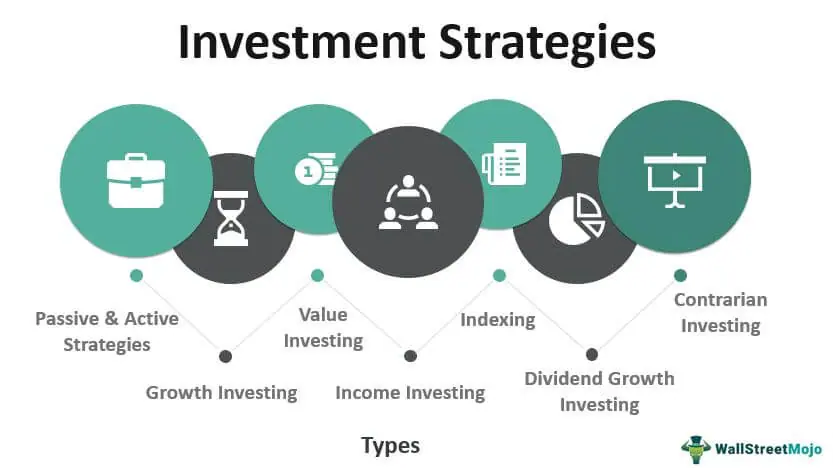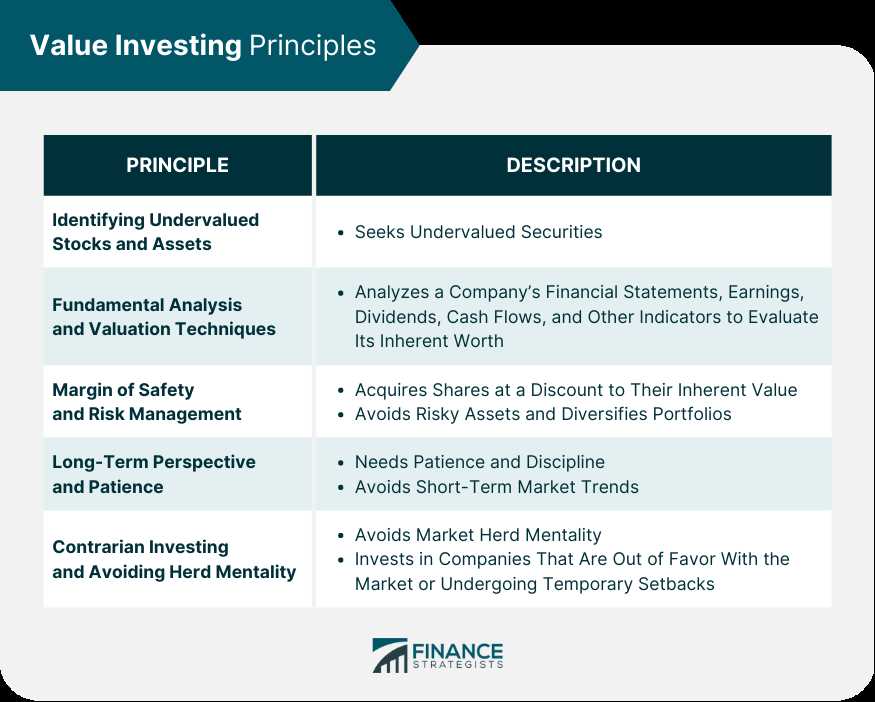What is Value Investing?
Value investing is an investment strategy that involves buying stocks or other assets that are considered undervalued by the market. The goal of value investing is to identify opportunities where the market has priced a company or asset below its intrinsic value, providing an opportunity for investors to buy at a discount.
Value investors believe that the market often overreacts to short-term news and events, causing prices to fluctuate more than the underlying value of the company. By focusing on the underlying value of a company, value investors aim to take advantage of these market inefficiencies and generate long-term returns.
Value investing is based on the principle that the market is not always efficient and that it is possible to find bargains in the form of undervalued stocks. These stocks may be undervalued due to factors such as temporary market downturns, negative investor sentiment, or overlooked opportunities.
Value investors typically look for stocks with low price-to-earnings (P/E) ratios, low price-to-book (P/B) ratios, and high dividend yields. They also analyze a company’s financial statements, management team, competitive position, and industry trends to assess its intrinsic value.
Value investing is a long-term strategy that requires patience and discipline. It involves buying stocks with the expectation that their value will eventually be recognized by the market and increase over time. Value investors often hold onto their investments for years, waiting for the market to catch up to their assessment of the company’s value.
Overall, value investing is a strategy that seeks to capitalize on market inefficiencies and generate long-term returns by buying undervalued assets. It requires careful analysis and a contrarian mindset to identify opportunities that others may have overlooked.
Definition, Principles, and Benefits
Value investing is an investment strategy that involves identifying undervalued stocks and purchasing them with the expectation that their value will eventually increase. The core principle of value investing is to buy stocks that are trading at a price lower than their intrinsic value.
Value investors believe that the market sometimes undervalues certain stocks due to temporary factors or investor sentiment, and that these stocks have the potential to deliver higher returns in the long run. They focus on the fundamental analysis of companies, looking at factors such as earnings, cash flow, and book value to determine the true value of a stock.
Principles of Value Investing

There are several key principles that guide value investors:
- Margin of Safety: Value investors look for stocks that have a significant gap between their market price and their intrinsic value. This provides a margin of safety, protecting the investor from potential losses if the stock price declines.
- Long-Term Perspective: Value investing is a long-term strategy, and investors are willing to hold onto their investments for an extended period of time. They believe that over time, the market will recognize the true value of the stock and the price will increase.
- Focus on Fundamentals: Value investors focus on the underlying fundamentals of a company, such as its financial statements, management team, and competitive advantage. They believe that a company with strong fundamentals is more likely to deliver long-term value.
Benefits of Value Investing
Value investing offers several benefits for investors:
- Potential for High Returns: By purchasing undervalued stocks, value investors have the potential to earn high returns when the market recognizes the true value of the stock.
- Lower Risk: The margin of safety principle in value investing helps to reduce the risk of losses. By buying stocks at a discount to their intrinsic value, investors have a buffer in case the stock price declines.
- Focus on Fundamentals: Value investing encourages investors to focus on the fundamental aspects of a company, which can help them make more informed investment decisions and avoid speculative or overvalued stocks.
- Contrarian Approach: Value investing often involves going against the crowd and investing in stocks that others may overlook or undervalue. This contrarian approach can lead to opportunities for higher returns.
Value Investing Strategies
Value investing is a popular investment strategy that involves identifying undervalued stocks and purchasing them with the expectation that their value will increase over time. There are several different strategies that value investors can employ to find these undervalued stocks.
1. Fundamental Analysis
One of the key strategies used in value investing is fundamental analysis. This involves analyzing a company’s financial statements, such as its balance sheet, income statement, and cash flow statement, to determine its intrinsic value. Value investors look for companies that have strong fundamentals but are currently undervalued by the market.
By conducting a thorough analysis of a company’s financials, value investors can identify stocks that are trading at a discount to their intrinsic value. This allows them to buy these stocks at a lower price and potentially profit when the market eventually recognizes their true value.
2. Contrarian Investing
Another strategy used by value investors is contrarian investing. This involves going against the prevailing market sentiment and buying stocks that are out of favor with investors. Contrarian investors believe that the market often overreacts to short-term news or events, causing stocks to become undervalued.
By taking a contrarian approach, value investors can take advantage of these market overreactions and buy stocks at a lower price than their true value. This strategy requires patience and a long-term investment horizon, as it may take time for the market to recognize the value of these stocks.
3. Margin of Safety

A key principle of value investing is the concept of a margin of safety. This refers to buying stocks at a significant discount to their intrinsic value, providing a cushion against potential losses. Value investors look for stocks that have a wide margin of safety, meaning that their current price is significantly lower than their estimated intrinsic value.
By purchasing stocks with a margin of safety, value investors can reduce their risk and increase their potential for long-term gains. This strategy helps protect against unforeseen events or changes in the market that could negatively impact the stock’s value.
Overall, value investing strategies involve a combination of fundamental analysis, contrarian investing, and a focus on a margin of safety. By employing these strategies, value investors aim to identify undervalued stocks and generate long-term returns.
Key Approaches and Techniques in Value Investing
Value investing is an investment strategy that involves identifying undervalued stocks and purchasing them with the expectation that their price will eventually increase. There are several key approaches and techniques that value investors use to find these undervalued opportunities.
1. Fundamental Analysis
One of the primary approaches in value investing is fundamental analysis. This involves analyzing a company’s financial statements, such as its balance sheet, income statement, and cash flow statement, to assess its intrinsic value. Value investors look for companies that have strong fundamentals, such as low debt, consistent earnings growth, and a competitive advantage in their industry.
2. Contrarian Investing
Another key approach in value investing is contrarian investing. This involves going against the crowd and investing in stocks that are currently out of favor or facing temporary setbacks. Contrarian investors believe that the market often overreacts to negative news or short-term challenges, causing the stock price to be undervalued.
Contrarian investors look for companies that have strong long-term prospects but are currently experiencing temporary difficulties. They believe that these companies have the potential for significant upside once the market recognizes their true value. This approach requires patience and the ability to withstand short-term volatility.
3. Margin of Safety
Value investors also employ the concept of a margin of safety when making investment decisions. The margin of safety is the difference between the intrinsic value of a stock and its market price. By purchasing stocks with a significant margin of safety, value investors aim to protect themselves against potential downside risks.
Value investors look for stocks that are trading at a discount to their intrinsic value, providing a cushion in case their analysis is incorrect or unforeseen events impact the company’s performance. This approach helps mitigate the risks associated with investing in undervalued stocks.
Conclusion:
Value investing involves a range of approaches and techniques to identify undervalued stocks. Fundamental analysis, contrarian investing, and the concept of a margin of safety are key components of this investment strategy. By applying these approaches, value investors aim to generate superior returns over the long term.
Risks of Value Investing

While value investing can be a profitable investment strategy, it is not without its risks. It is important for investors to be aware of these risks before implementing a value investing approach.
1. Value traps: One of the main risks of value investing is falling into a value trap. A value trap occurs when an investor identifies a stock as undervalued based on its low price-to-earnings ratio or other valuation metrics, but the stock continues to decline in value. This can happen if the company’s fundamentals deteriorate or if there are other negative factors affecting the stock.
2. Market timing: Another risk of value investing is the difficulty of timing the market. Value investors typically look for stocks that are trading below their intrinsic value, but it can be challenging to accurately determine when a stock has reached its lowest point and is ready to rebound. Timing the market correctly is crucial for value investors to maximize their returns.
3. Lack of diversification: Value investing often involves concentrated portfolios with a limited number of stocks. While this approach can lead to higher potential returns, it also increases the risk of losses. If one or a few of the stocks in a value investor’s portfolio perform poorly, it can have a significant impact on the overall portfolio performance.
4. Value vs. growth: Value investing is often contrasted with growth investing, which focuses on investing in companies with high growth potential. Value stocks tend to be more stable and less volatile than growth stocks, but they may also have slower growth rates. This can result in missed opportunities for value investors if they fail to invest in high-growth companies.
5. Economic and industry risks: Value investing is influenced by macroeconomic factors and industry trends. Economic downturns or disruptions in specific industries can negatively impact the performance of value stocks. It is important for value investors to stay updated on economic and industry developments to mitigate these risks.
6. Behavioral biases: Finally, value investing requires discipline and the ability to resist emotional decision-making. Investors may be tempted to sell a stock that has declined in value or buy a stock that has been performing well, even if it goes against their value investing principles. Overcoming these behavioral biases is essential for successful value investing.
Overall, value investing can be a rewarding investment strategy, but it is important for investors to carefully consider and manage the risks involved. By staying informed, maintaining a diversified portfolio, and sticking to their value investing principles, investors can increase their chances of achieving long-term success.
Risks of Value Investing
While value investing can be a profitable investment strategy, it is not without its risks. Investors should be aware of these risks before implementing a value investing approach.
1. Value Traps
One of the main risks of value investing is falling into a value trap. A value trap occurs when an investor buys a stock that appears to be undervalued based on traditional valuation metrics, but the stock price continues to decline. This can happen if the market has correctly identified fundamental issues with the company that the investor has overlooked. It is important for value investors to thoroughly research and analyze a company’s financials, competitive position, and industry trends to avoid falling into value traps.
2. Value Erosion
Another risk of value investing is value erosion. Value investors typically look for stocks that are trading at a discount to their intrinsic value. However, the market may not recognize or realize the true value of the stock, leading to a prolonged period of undervaluation. This can result in the investor’s capital being tied up in a stock that does not appreciate in value as expected. Additionally, if the market sentiment towards value stocks changes, the investor may experience a decline in the stock price, further eroding the value of their investment.
3. Limited Growth Potential
Value stocks are often companies that are considered to be undervalued or out of favor with the market. While these stocks may offer potential for capital appreciation, they may also have limited growth potential. Value stocks are typically mature companies in mature industries, and their growth prospects may be limited compared to growth stocks. This means that value investors may miss out on the potential for significant gains that can be achieved with growth stocks.
4. Market Timing

Timing the market is a challenge for any investor, and value investors are no exception. Value investing requires patience and a long-term perspective. However, the market can be unpredictable, and the timing of when to buy or sell a value stock can greatly impact the investor’s returns. Buying a stock too early or selling too soon can result in missed opportunities or losses. It is important for value investors to carefully consider market conditions and trends before making investment decisions.
Despite these risks, value investing can still be a successful investment strategy when implemented with discipline and thorough research. It is important for investors to understand and manage these risks to maximize their chances of success.

Emily Bibb simplifies finance through bestselling books and articles, bridging complex concepts for everyday understanding. Engaging audiences via social media, she shares insights for financial success. Active in seminars and philanthropy, Bibb aims to create a more financially informed society, driven by her passion for empowering others.
